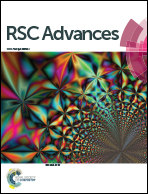Enhanced photocatalytic activity of S-doped BiVO4 photocatalysts
Abstract
S-doped BiVO4 photocatalysts were synthesized using a surfactant-free hydrothermal method without any further treatments and characterized by X-ray diffraction (XRD), X-ray photoelectron spectroscopy (XPS), field-emission scanning electron microscopy (FESEM), energy-dispersive X-ray spectroscopy (EDS), inductively coupled plasma atomic emission spectrometry (ICP-AES), ultraviolet-visible diffuse reflectance spectroscopy (UV-vis DRS), photoluminescence spectroscopy (PL) techniques, and transient photocurrent responses. The results show that S2− ions can be doped into the BiVO4 crystal lattices and substitute the O2− ions, which can increase the BiVO4 lattice parameters, increase the number of V4+ species and oxygen vacancies, and cause a red shift of the reflectance spectra. Compared with the pure BiVO4 photocatalyst, S-doped BiVO4 photocatalysts exhibit much higher photocatalytic activity in the degradation of methylene blue (MB) under visible light irradiation, because an appropriate amount of S2− ions can improve the separation efficiency of photogenerated electron–hole pairs, and hinder their recombination. The photo-stability of the S-doped BiVO4 photocatalysts, and the effects of the active species involved in the photocatalytic process from which we deduced a possible mechanism for MB photocatalytic degradation were also examined.


 Please wait while we load your content...
Please wait while we load your content...